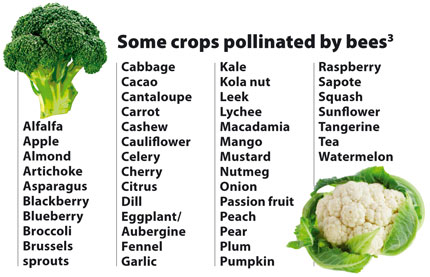Our basic way of life is largely dependent on those little buzzing bees busily collecting food. Bees have been in sharp decline in North America and in parts of Europe over the last several years. Many believe multiple factors are to blame for colony collapses, a few being chemical-based fertilizers, climate change and invasive parasites that attack the hive. This is causing massive amounts of damage to insect-dependent agriculture. As a result, food shortages are on the rise and many experts are quickly trying to find ways to help the bees.
A Bee Highway
One such solution is creating feeding stations for bees to rely on, especially in urban areas. Oslo is the first city to create a bee highway to support bees. Because bumblebees and other pollinating insects struggle in urban environments because of lack of available water and pollen and/or nectar producing flowers, these feeding stations can offer support to the bees and reduce environmental stressors.
“The idea is to create a route through the city with enough feeding stations for the bumblebees all the way,” Tonje Waaktaar Gamst of the Oslo Garden Society told local paper Osloby. ”Enough food will also help the bumblebees withstand man made environmental stress better.”
Gamst have asked the public and local business owners to plant bee-friendly plants on their property, rooftops and businesses along a route from east to west through the city.
To encourage further participation and support for the bee highway project, BiBy, a bee supporting organization has created an app where the public can see the “grey areas”, long stretches with no food for bees, in order to encourage the planting of flowers in areas that don’t have nearby parks.
“It will be easy to see barriers and obstacles on the map. The goal is to inspire people to fill these gaps.” Agnes Lyche Melvær of BiBy told OslobyThe public will also be able to upload pictures of their projects to improve the situation for bees and bumblebees, such as flowerpots and bee hotels.”Some bee species like to live in solitary rooms. They need small hollows like a crack in an old tree trunk. It’s very important to have some old wood lying around,” says Melvær.
Are You Bee-Friendly?
Any community can create a bee highway, or for that matter a bee-friendly garden. Doing so will promote bee sustainability and a healthier garden, as well. Consider planting some of these beneficial flowers:
- Asters (Aster/Callistephus)
- Sunflowers (Helianthus/Tithonia)
- Salvia (Salvia/Farinacea-Strata/Splendens)
- Bee balm (Monarda)
- Hyssop (Agastache)
- Mint (Mentha)
- Cleome / Spider flower (Cleome)
- Thyme (Thymus)
- Poppy (Papaver/Eschscholzia)
- California poppies (Eschscholzia)
- Bachelor’s buttons (Centaurea)
- Lavender (Lavandula)
Choosing flowers with long bloom cycles will be less work for you and help the bees out for months on end. Many of the flowers listed above are drought-tolerant and can be grouped together to cut down on watering. As well, fruit trees are wonderful for pollinators and an abundant source of blossoms. Not to mention, it makes delicious honey.
Bees should also have a source of water in the garden too. Birdbaths, water fountains and small ponds are great for bees. Remember not to use any chemical-based fertilizers on plants as this will hurt the bees!
Bees are essential to our food source and we should all make a point to help them out.
This article was originally published at Ready Nutrition™ on May 27th, 2015









I bought a top bar hive and one package of bees. It’s been amazing and be one with the bee and you don’t need a smoker or protective clothing.